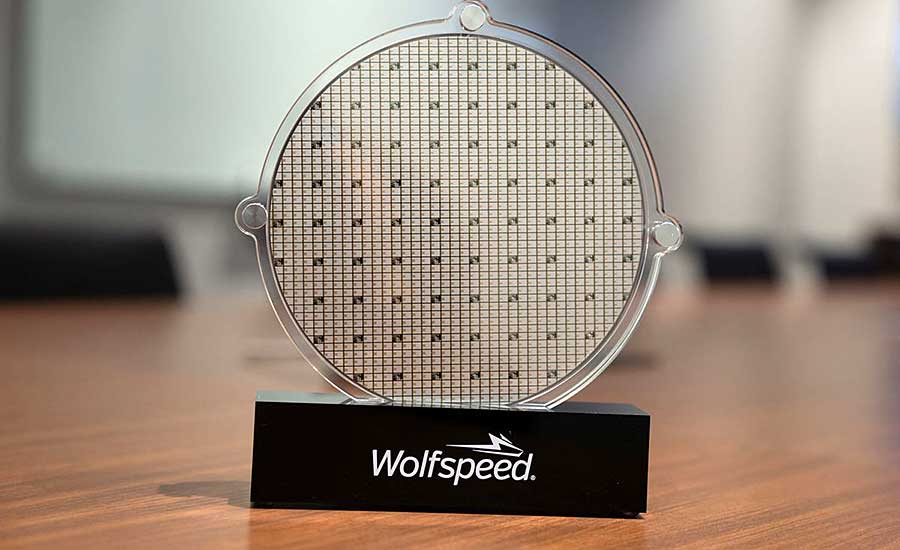Rarely does a major spending bill in Washington draw bipartisan support and yield immediate results. Behold the CHIPS and Science Act, which was signed into law by President Joe Biden Aug. 9. The act provides more than $52 billion in new funding to boost domestic research and manufacturing of semiconductors in the U.S.
The bill passed the Senate by a vote of 64-33 on July 27. It passed the House a day later by a vote of 243-187-1. Every senator who caucuses with the Democratic Party, except for Bernie Sanders of Vermont, voted in favor of the act. They were joined by 17 Republican senators, including Mitch McConnell of Kentucky, Mitt Romney of Utah, and Lindsey Graham of South Carolina.
The act was debated amidst a global semiconductor shortage and is intended to provide subsidies and tax credits to chip makers with operations in the United States. The Department of Commerce was granted the power to allocate funds based on companies’ willingness to sustain research, build facilities, and train new workers.
The act includes $39 billion in tax benefits and other incentives to encourage American companies to build new chip manufacturing plants in the U.S. Companies are subjected to a 10-year ban prohibiting them from producing chips more advanced than 28-nanometers in China and Russia if they are awarded subsidies under the act.
Remarkably, barely a month after the act was signed into a law, a slew of companies announced major investments in U.S. semiconductor manufacturing.
Micron Technology Inc. said it will invest $15 billion through the end of the decade to construct a new factory in Boise, ID, to make memory chips. This will be the first new memory manufacturing fab built in the U.S. in 20 years, ensuring a domestic supply of memory chips required for automobiles, data centers and other applications.
It’s the largest private investment ever made in Idaho, and it’s the first of several investments that Micron plans to make in the U.S. The new fab will be co-located at the company’s headquarters in Boise to enhance operational efficiency, accelerate technology deployment and improve time to market. The facility will create more than 17,000 new American jobs, including approximately 2,000 direct Micron jobs, by the end of the decade.
“We thank President Biden, Secretary of Commerce Raimondo, Secretary of Defense Austin, the Biden-Harris Administration and members of Congress for the bipartisan support of the CHIPS and Science Act, which made this investment decision possible,” says Micron President and CEO Sanjay Mehrotra. “Our new leading-edge memory manufacturing fab will fuel U.S. technology leadership, ensuring a reliable domestic supply of semiconductors that is critical to economic and national security.”
On the opposite side of the country, Wolfspeed Inc. said it will build a state-of-the-art, multi-billion-dollar factory in Chatham County, North Carolina, to produce wide-bandgap semiconductors made from silicon carbide. The new factory will increase the company’s manufacturing capacity by more than 10 fold.
“Wolfspeed is the industry leader in supplying the materials required to meet the accelerating demand for next-generation semiconductors,” says Gregg Lowe, president and CEO of Wolfspeed. “Demand for our products continues to grow at a rapid pace, and [supply continues to be] constrained. Expanding our materials production will further our market leadership and allow us to better serve the growing needs of our customers.”
The facility will primarily produce 200-millimeter silicon carbide wafers, which are 1.7 times larger than 150-millimeter wafers, translating into more chips per wafer and ultimately, lower device costs. These wafers will be used to supply Wolfspeed’s Mohawk Valley Fab, which opened earlier this year as the world’s first, largest and only fully automated 200-millimeter silicon carbide fabrication facility.
Phase one construction is anticipated to be completed in 2024 and cost approximately $1.3 billion. Between 2024 and the end of the decade, the company will add additional capacity as needed, eventually occupying more than 1 million square feet on the 445-acre site.
State and local funding, including a Job Development Investment Grant from the North Carolina Department of Commerce, will support the development of the facility’s first phase and represents an approximately $1 billion incentive package from state, county and local governments. In addition, the company hopes to apply for federal funding from the CHIPS and Science Act to accelerate construction of the facility. The project is expected to create 1,800 jobs.
And, in the Midwest, Hemlock Semiconductor Corp. (HSC) announced plans to invest $375 million and create 170 jobs at its facilities in Thomas Township, MI, enabling the company to continue producing polysilicon for the semiconductor and solar industries in Michigan.
“We built our global reputation on the ability to stay at the forefront of high-tech polysilicon production for the critical semiconductor and solar industries,” says AB Ghosh, operations chairman and CEO of Hemlock Semiconductor. “This investment in local infrastructure supports HSC’s ability to improve and expand our operations and helps us remain globally competitive.”
See what happens when Democrats and Republicans cooperate? Keep it up, Washington.



